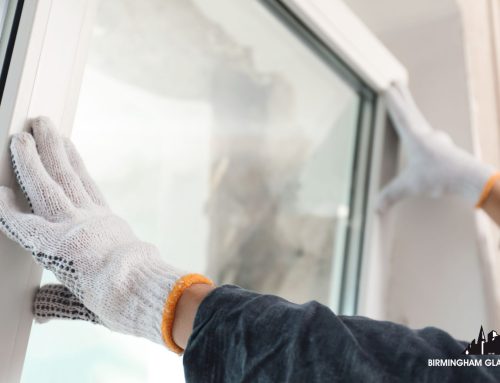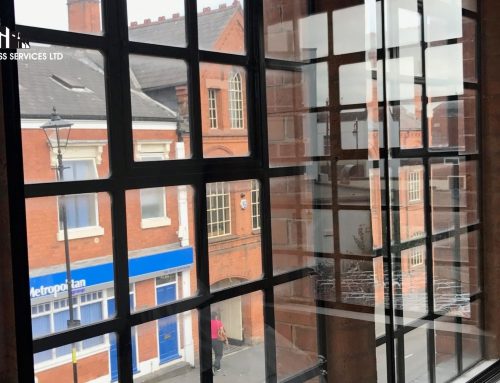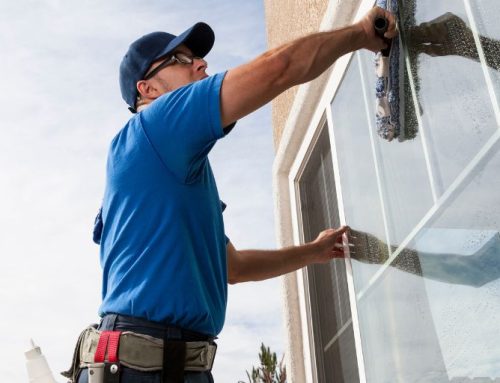Are you thinking about adding a pet door to your glass door? It’s a great idea if you’re find yourself playing doorman for your dog or cat a lot. But before you start hacking away at your doors to create a pet flap, there are a few things you should know, especially if you’re dealing with glass.
Pet doors in glass panels can be really convenient, but they also come with a few challenges. In this blog we’re going to be sharing how to install a pet door in a way that keeps your home secure, what kind of installation makes sense, and how to avoid spending more than you need to.
Installing a pet door in glass vs UPVC panels
First things first, where are you planning to put the pet door?
If your door has a UPVC panel (usually the solid part under the glass), that’s the easier option. Cutting into it is simpler, it’s safer, and if something goes wrong, it’s not as much of a hassle to replace.
Installing a pet door in glass takes special tools, more care, and a professional who knows what they’re doing. It’s also more expensive, especially if you’re working with double-glazed or toughened glass. So, if there’s a panel available, installing your pet flap there is often the smarter (and cheaper) choice.
Pet door security risks in glass installations
Pet doors might seem harmless, but they can create security potential weak spots in your home, especially the larger ones. A big pet flap might be perfect for your labrador, but if it’s large enough for someone to reach through, it’s something to think about. Even if the flap locks, the area around it might be easier to break or tamper with.
Also, where you place the pet flap requires some thinking too. You definitely don’t want it close to a door handle or lock as that’s just asking for trouble.
Best locking options for pet doors in glass
Luckily, pet doors have come a long way. There are some clever locking features available now, like:
- Magnetic or microchip locks that only open for your pet.
- Reinforced framing around the flap to stop people or animals from forcing their way in.
- Smart placement to keep the flap far from your main door locks or handles.
These features add a bit to the cost, but they’re definitely worth it for the peace of mind they offer.
Circular Cutouts vs Square Cutouts for glass pet doors
If you’re going the glass route, here’s something people don’t often think about: the shape of the hole.
- A circular cutout is the safest and most cost-effective choice. It puts less stress on the glass and is easier to install.
- A square or rectangular cutout creates weak points and increases the chance of cracking. It also costs more to do right, often requiring reinforced glass or special glazing.
This is why many installers will recommend, or even insist on, using a circular cut. A square cut can also cost nearly double a circular cut because it is much trickier and more risky to install.
Common problems with poor glass pet door installs
Installing a pet door in glass can be a great solution for giving your furry friend some independence, but if it’s done incorrectly, it can lead to some serious headaches. One of the most common mistakes people make is cutting large or square openings in the glass, especially when it’s not designed to handle that kind of modification. Glass panels are under a certain amount of pressure and tension by design, and making the wrong cut can throw that balance off completely.
We’ve seen situations where someone cut a big square hole to fit a pet door, only to discover cracks forming around the edges just weeks later. Over time, those cracks can spread (sometimes without much warning!) and the entire glass panel may need to be replaced. That’s not a cheap fix.
Another issue is choosing the wrong size or shape for the pet door flap. If it’s too large, too small, or placed in a weak spot on the glass, it puts unnecessary stress on the surrounding area. Even if it seems fine at first, those subtle pressure points can cause problems in the long run.
Our best advice is to keep in mind that a pet door in glass is one of those projects where precision really matters. Working with someone experienced in handling glass and who understands the structural implications of the installation can save you a lot of money and hassle down the road.
Why choose Birmingham Glass for your pet door installation?
Our team is skilled in working with all types of glass, including toughened and double-glazed panels, which are essential when modifying glass for a pet door. We take a careful, measured approach to ensure the cutout is done safely and that the integrity of the glass isn’t compromised. We’ll guide you through the process and make sure your installation is secure, functional, and looks great too.
Checklist for safe and secure pet door installation
Here’s what to keep in mind if you’re going ahead with a pet door:
- Stick to circular cutouts if you’re cutting into glass
- Choose UPVC panels over glass when you can
- Go for a lockable pet flap (microchip or magnetic is ideal)
- Keep the pet flap small enough to fit your pet and no bigger
- Make sure it’s not near a door lock or handle
- Hire a professional who knows what they’re doing, this is not a DIY job
- Ask if reinforcement is needed around the pet flap
Talk to our friendly team today for a free, no-obligation quote.












